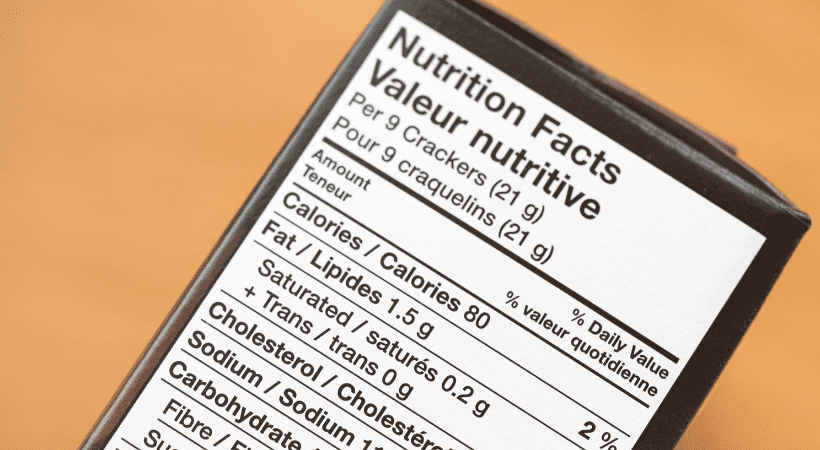Coeliac Awareness Week – What Do Brands Need to Do?
Coeliac Awareness Week – What Do Brands Need to Do?
Coeliac Awareness Week 2022 runs from 9th to 15th May, and is this year aimed at educating and encouraging individuals who are undiagnosed to understand the disease’s symptoms. Here, our Senior Regulatory Expert, Janet Dalzell, explains what Coeliac Disease is, and whether brands need to consider it in relation to gluten free ingredients and product labelling.

What is Coeliac Disease?
As many people who have Coeliac Disease will know all too well, it’s certainly no picnic. The autoimmune disease leads to the immune system attacking the body’s tissues when gluten is consumed, and stops individuals from taking in nutrients. It can affect people in many different ways, with symptoms including diarrhoea, excessive wind, nausea, and vomiting – all of which can last from a few hours to a few days.
For people experiencing these symptoms but who are undiagnosed for the disease, it can be difficult to pinpoint as symptoms can mimic other conditions such as irritable bowel syndrome or wheat intolerance. Coeliac UK offers a helpful online self-assessment which can help to gather information when seeking support from a medical professional.
Reaching A Diagnosis
Testing for Coeliac Disease is pretty simple, and involves a blood test to check for antibodies. If this is positive, it will usually be followed by a referral to a gastroenterologist for a biopsy of the gut (although occasionally, very high antibodies showing in the blood test results may negate the need for a biopsy altogether). It’s important that gluten is not removed from the diet though until after a diagnosis is confirmed because the markers (antibodies) used to detect coeliac will not be present in a blood test and the condition not easily identifiable.
Similarly, if a biopsy of the duodenum (the first part of the small intestine) is undertaken, the cells may appear normal if gluten has been removed from the diet.
Coeliac Disease is linked to other autoimmune conditions including type 1 Diabetes and Thyroid Disease. If Coeliac Disease goes undiagnosed, it often results in osteoporosis because of a sufferer’s inability to absorb calcium properly, and also lactose intolerance because of damage by gluten to the part of the gut where lactase, the enzyme that breaks down lactose, is produced. More information on these and other conditions linked to Coeliac Disease can be found here.
The Importance of Labelling
The treatment for Coeliac Disease consists of a strict gluten-free diet, and for those further suffering from lactose intolerance, a lactose-free diet should be followed too. With both gluten and lactose in so many products we consume, it can be quite a challenge!
It’s hugely important to anyone suffering from the disease that ingredients containing gluten, such as wheat, rye, barley, and oats, are clearly identified in the ingredients listing, which is governed by FICR Regulation (EU) 1169/2011. And, where there is a real likelihood that cross-contamination may occur, a ‘may contain’ statement should also be included.
The absence or reduced presence of gluten in foods may voluntarily be given on pack, but if so, must adhere to Regulation (EU) 828/2014, which stipulates that the term;
- “gluten free” may only be used for products containing 20 parts per million of gluten or less, and
- “very low gluten” can only be used for foods containing wheat, rye, barley or oats or their crossbred varieties, and that have been produced in such a way as to limit the amount of gluten to less than 100 parts per million in the food as sold to the consumer.
This regulation also requires that oats presented as “gluten free” or “very low gluten” must have been specifically produced, prepared and /or processed to avoid contamination by wheat, rye, barley and their crossbred varieties, nor must the gluten content of such oats exceed 20 parts per million.
Of course, for those suffering from Coeliac Disease with a concurrent diagnosis of lactose intolerance, the requirement in Regulation (EU) 1169/2011 to highlight ‘milk and products thereof including lactose’ is equally as crucial.
For support on how to label products accurately and safely, do get in touch, or to find out more about Coeliac Disease, visit www.coeliac.org.uk.
Recent blogs:
Alcohol Labelling: How to Label Volume in the UK and EU
Recent Cases of ASA Action Against Green Washing
Traffic Light Labelling – How to apply to your food label
Next reads
The Peanut Diaries: School and Social Occasions
The Peanut Diaries: Navigating Social Events and Celebrations with Food Allergies
The Peanut Diaries: A Parent’s Journey to Uncovering their Child’s Allergy
Redefining Healthy: What the FDA’s New Rules Mean for Food Labels and Nutrition Claims
Keep up to date with our latest insights
Subscribe to our mailing list to stay in touch with the latest news, insights and updates from Ashbury





